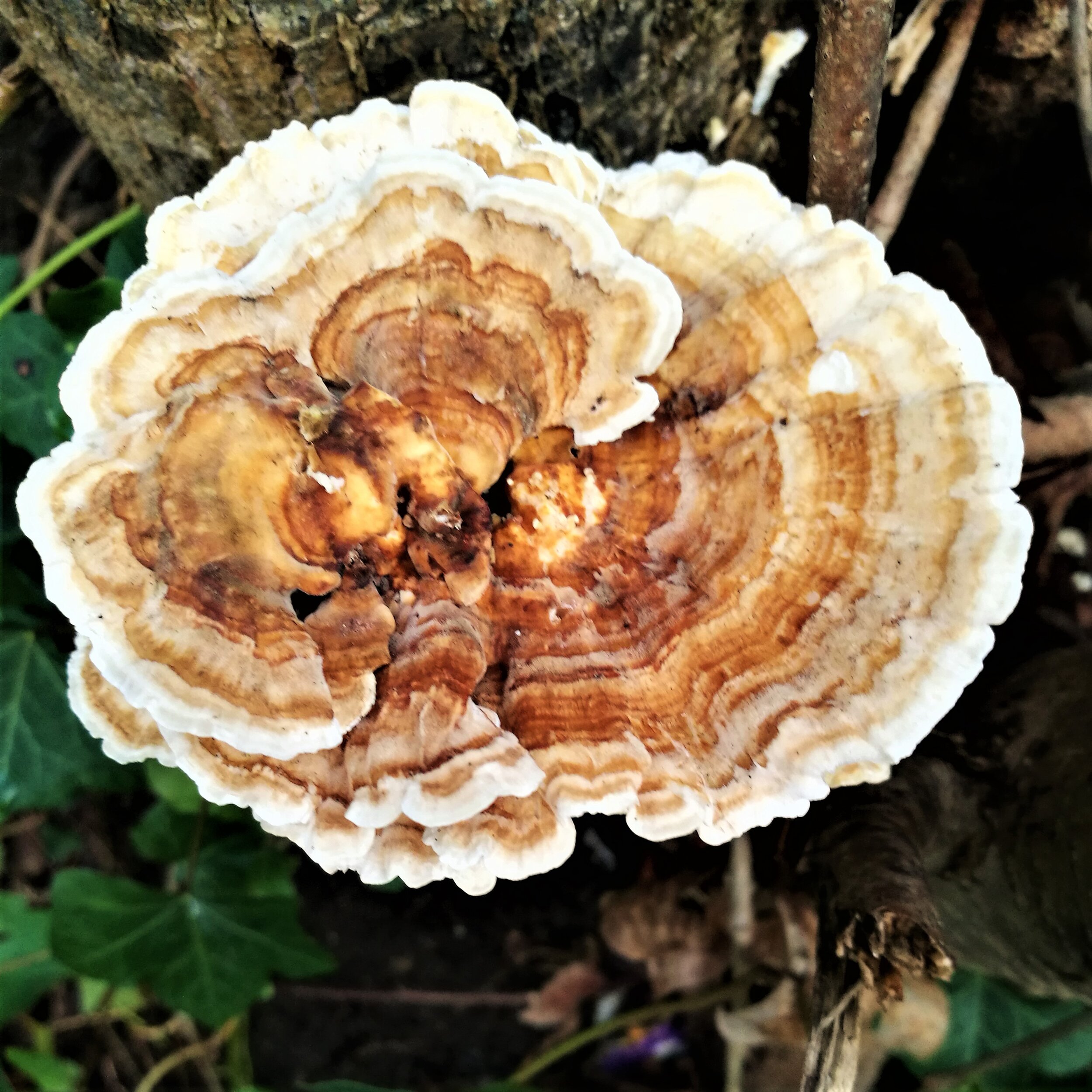Turkeytail (Trametes versicolor)
Turkeytails are a welcome sight when out walking through the forest, injecting contrast and colour in the dim light of a shady woodland. I love that there is so much variety in their appearance, depending on season, growing medium, and form. They are truly individual communities. They are also a guaranteed find for anyone out on the hunt for mushrooms, being so widespread and common. I have found them in the forests of Canada, Britain, Japan, Europe and Honduras. They are beautifully delicate looking, while at the same time being tough as boots.
What it looks like
Look for turkeytails throughout the seasons, though they are less vibrant in winter and more vibrant in late summer to autumn). Turkeytail is a small, thin bracket fungus growing in shelves or whorls on decaying wood (typically hardwoods like beech and oak). Brackets are roughly semi-circular with a delicately-undulating edge (which is often white or off-white). Look for it on stumps and fallen logs. The upper surface is banded with thin, concentric bands of varying colour, from white through tan, brown and black and greys, yellows, and greens and even pale purples being possible as well. It is woody and tough. It has no discernible odour.
Uses
Turkeytail is edible, but not generally worth eating due to its texture. It has been used medicinally to improve the immune system, to help the body fight disease. Its most common bushcraft use is as a fightstarter: the dried-out brackets will hold a spark and create a coal from which a fire can be lighted.

